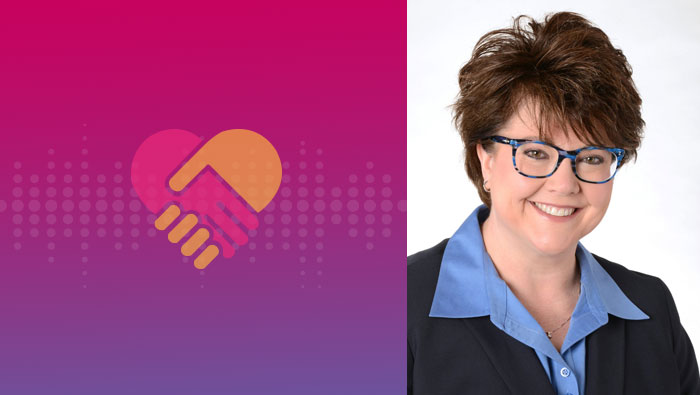Although organ recoveries and transplants slowed in the first weeks and months of the crisis in the U.S. as the system adapted, the most recent data available show that to date, more deceased donor transplants have occurred in 2020 than at this time last year. Considering that 2019 was itself a record-setting year for organ donation, organ procurement organizations (OPOs) are ensuring that the gift of life continues the pandemic.
The trend is also true in Denver-based OPO Donor Alliance‘s donation service area of Colorado and Wyoming—where deceased donor transplants have nearly returned to record levels. Donor Alliance, which is on track to match and likely exceed its performance from last year, has consistently been recognized for achieving outstanding clinical and operational outcomes, including with the 2018 Malcolm Baldrige National Quality Award, the only cabinet-level award for performance excellence.
In a recent interview, CEO Jennifer Prinz shared how Donor Alliance has been adapting to change while remaining grounded in its mission and core values.
2019 was a record-setting year for Donor Alliance and many other OPOs. Have you been able to sustain those gains overall in 2020?
Before the pandemic hit, donation and transplant was up compared to last year across the entire country.
Our numbers, like many other OPOs, dropped a bit in the first weeks and months of the crisis, which was to be expected. For us, this was mostly in the area of DCD [donation after circulatory death] authorizations. We experienced a higher transplant hospital decline rate for DCD donors during those first six weeks. That was a pretty significant impact for our organization.
However, our June and July organ donor numbers were on track with prior year top performance with 18 donors each month. These 36 heroic organ donors saved the lives of 96 people who were waiting for lifesaving transplants.
A core value of Donor Alliance is people first. How have your core values helped guide you through what’s happening with your team and with other OPOs?
We are always grounded in people first, but it became apparent when the pandemic hit that this particular core value was more important than ever. We have a lot of people to put first.
Our employees need to be safe and protected so we can do the important lifesaving work of the organization. Our heroic donors and donor families rely on us to to carry out our mission and maximize their gifts of life, even in the midst of a pandemic. And patients in need of lifesaving organ transplants literally depend on us for their second chances at life.
All of this means that we had to pivot quickly, adapt our operations and double down on our collaboration with our partners to make sure we could continue to fulfill our mission to save lives. The waitlist can’t wait.
How did a people-first approach match up with Donor Alliance working with your hospital and transplant partners?
Good communication and trusting relationships with our local partners was key, but we also have had a shift in what we consider local—with broader sharing there’s a new local, and it took a significant increase in communication to be successful.
On the transplant hospital side, we were able to quickly understand where our transplant partners were in terms of any changes. We, of course, stayed closely connected regarding the type of COVID-19 testing and screening that Donor Alliance could facilitate and how quickly the testing could be done to ensure the safety of the organ for transplant. This was an important part of our collaboration with our transplant hospitals.
On the donor hospital side, our partners started sharing their surge plans very early in the pandemic. Some donor hospitals were concerned they might not be able to make donation happen at those peak times due to capacity limits with ICU beds and ventilators.
We swiftly created our own surge plan to effectively support donor hospitals and allow donation to continue, even when hospitals exceeded capacity for critical care beds, ventilators and staff throughout our service area. We did this by leveraging our recovery center, which allowed us to quickly flex with the hospitals who were exceeding capacity and alleviate any concerns around the recovery of brain-dead organ donors in their hospitals. Through this collaborative effort, we were able to avoid missing any potential donor recoveries due to capacity issues—an achievement we are very proud of. Our recovery center continues to be a huge benefit for our service area.
The entire OPO system has flexed to a new normal during COVID-19. What does it say about the system?
I think there’s nothing like a crisis to test our systems and reveal the strengths and vulnerabilities.
What we have experienced from a national perspective across the U.S. is the strength in our system. Transplant hospitals and OPOs are working together to make sure donation happens, safely, so we can honor the gift of donation to save the lives of those who are waiting.
The donation and transplantation community has had to adapt, all with a clear focus to continue to save lives during the pandemic. I think this commitment demonstrates the strengths of the donation and transplantation system.
I know we have challenges in the system—yet the U.S. donation and transplant system produces some of the best results in the world. I believe that the community’s focus on improvement will help save more lives than ever before.
Sue Dunn recently retired, and you recently became CEO. How did you all celebrate her before she stepped down?
First of all, we are looking forward to a day without COVID-19 to be able to celebrate Sue’s amazing career in the field of donation and transplantation.
We were able to surprise Sue on her last day with an honor walk, where everybody gathered—while maintaining social distance—and shared stories about when they joined the organization and how many lives were saved through their work alongside of Sue. We also dedicated an art piece in her honor in our donor garden, followed by a giant staff parade.
It’s my honor to follow Sue and to be able to work with this amazing Donor Alliance team to continue to drive performance throughout Colorado and Wyoming. I appreciate the opportunity to do this work on a daily basis—to honor our heroic organ and tissue donors, celebrate those lived saved through transplantation, and recognize all who continue to wait.
Prinz has volunteered for the OPTN in a variety of roles and is a current member of the OPTN Membership and Professional Standards Committee. An immediate past chair of the OPTN Organ Procurement Organization Committee, Prinz is also a past member of the OPTN Policy Oversight Committee , Ad Hoc Systems Performance Committee, and Ad Hoc Geography Committee, which helped develop the continuous distribution framework that will eliminate hard boundaries in organ allocation and allow organs to be shared more broadly. Prinz holds a bachelor of science degree in nursing from Wright State University, and a master’s degree in public health from the University of Tennessee, Knoxville.
Read more about Donor Alliance and their recognition by the Baldrige Performance Excellence Program.



